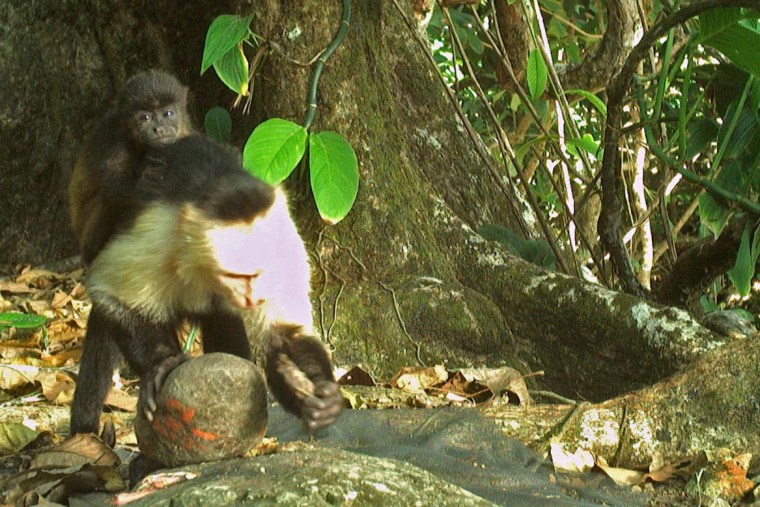A baby howler monkey clung to the back of an older male monkey, its tiny fingers grabbing the fur. But they are not linked and not even the same species.
Scientists have spotted surprising evidence of what they describe as abduction of monkeys while examining the video sequences of a small island in Panama. The Capuchin monkeys were seen carrying at least 11 yawn babies between 2022 and 2023.
“It was really a shocking discovery,” said Zoë Goldsborough, a behavioral ecologist at the Max Planck Institute of Animal Behavior in Germany. “We haven’t seen anything like it in the animal kingdom.”
The motivations of the monkeys remain under investigation. The Capuchins are monkeys the size of cats found in South America and Central America. They are long, intelligent and learn new behaviors from each other. A group of nasturtiums in Panama has even learned to use stone tools to break nuts and seafood.
Goldsberg and other researchers from Max Planck and Smithsonian Tropical Research Institute had set up more than 80 cameras to study the use of Capuchin tools, but were surprised to see the first Babies howlers appear at the beginning of 2022.
The images showed the Capuchins walking and beating their stone tools with baby howlers on their backs. But the cameras did not capture the moments of kidnapping, which, according to the scientists, probably occurred in the trees, where the howlers spend most of their time.

“Our window on this story is limited,” said Max Planck’s co-author Margaret Crofoot and Smithsonian. The results were published on Monday in the journal Current Biology. In most cases, or all of Baby Hurlers have died, researchers said. Infants howls are normally transported by their mother while breastfeeding. All the babies of the video – from a few weeks to a few months – were too young to be weaned.
“A part full of hope of me wants to believe that some have escaped and returned to their mother, but we do not know,” said Crofoot.
The videos recorded a few cases of young Capuchin men still carrying yawn babies who died, probably famine. Many animals – from orca gorillas – have been observed bearing their own dead offspring, although scientists are not sure of the reasons.
Why did the Capuchin males do it? There was no sign of deliberate assault towards babies and they were not eaten, excluding predation.
“We all spent hours spreading for the brains why they would do it,” said Goldsborough.
The first baby-snanch may have had a confused “attentive motivation” or a parental instinct, because he has shown an interacting sweetness with infants, she said. Then four other men copied his actions.
The researchers said that they did not believe that the Capuchins had harmed babies. So far, only one group of Capuchins has been known to kidnap.
Research shows the “remarkable behavioral variation between social groups of the same species,” said Catherine Crockford, primatologist at the CNRS Institute for Cognitive Sciences in France, which was not involved in the study.


